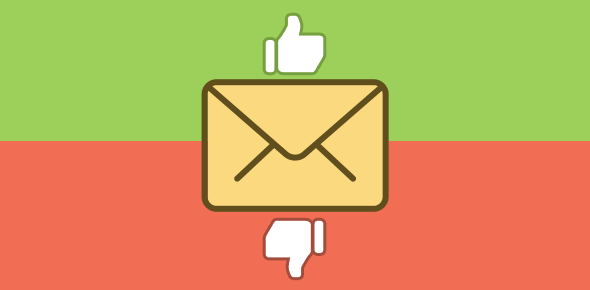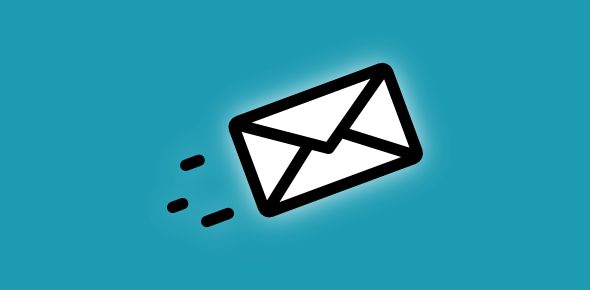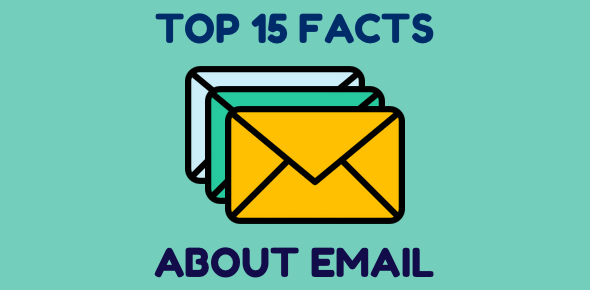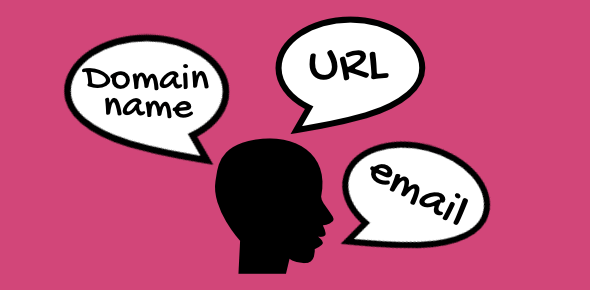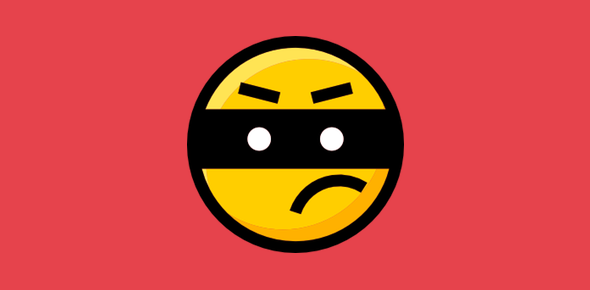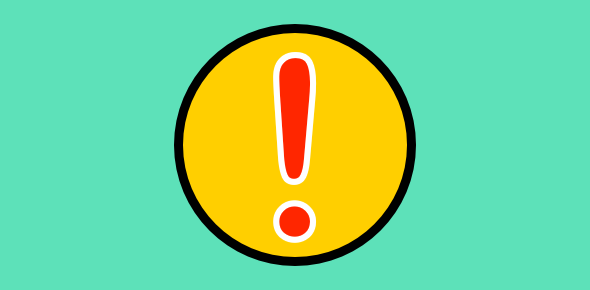 Email has changed the way we communicate. It’s easy, fast and reliable. Unfortunately, there are still many users who either are not aware or choose to ignore the basic do’s and don’ts. On this page, I touch upon 10 such important ‘email tenets‘, if I may call them so. And as you’ll come to know, it’s not all about etiquette.
Email has changed the way we communicate. It’s easy, fast and reliable. Unfortunately, there are still many users who either are not aware or choose to ignore the basic do’s and don’ts. On this page, I touch upon 10 such important ‘email tenets‘, if I may call them so. And as you’ll come to know, it’s not all about etiquette.
An email with no subject
 The subject field in the email composition form is there for a purpose. Ideally, the email subject should be a single line (just a few words) with which the recipient can figure out quickly the contents of the message. The search functionality on many email programs utilizes the contents of the email subject to dig out messages. Thus, be sure to put in keywords in this field. Most importantly, do not send email without a subject.
The subject field in the email composition form is there for a purpose. Ideally, the email subject should be a single line (just a few words) with which the recipient can figure out quickly the contents of the message. The search functionality on many email programs utilizes the contents of the email subject to dig out messages. Thus, be sure to put in keywords in this field. Most importantly, do not send email without a subject.
Sponsored Links
Message with just the subject and a file attached
 I’m sure we’ve all received emails which simply have an attachment (sometimes more than one) and no content. At times, even the subject is missing. Unless you know the recipient personally, this is generally considered highly indecorous (that’s as polite as I can get). And to all those who send their resumes this way, be assured that your message would be deleted immediately!
I’m sure we’ve all received emails which simply have an attachment (sometimes more than one) and no content. At times, even the subject is missing. Unless you know the recipient personally, this is generally considered highly indecorous (that’s as polite as I can get). And to all those who send their resumes this way, be assured that your message would be deleted immediately!
The ALL-CAPS message
 Do not write messages with the Caps Lock key on. This is akin to shouting… don’t ask me, I did’t make these rules! Anyway, a message wherein all letters are capitalized is considered rude and obnoxious. The reason probably lies in the fact that people find ALL CAPS words difficult to read, and this is especially true for the English language.
Do not write messages with the Caps Lock key on. This is akin to shouting… don’t ask me, I did’t make these rules! Anyway, a message wherein all letters are capitalized is considered rude and obnoxious. The reason probably lies in the fact that people find ALL CAPS words difficult to read, and this is especially true for the English language.
Don’t send large photos
 The prolific use of digital cameras and cell phones have resulted in people sharing their photos with everyone they know. If you hadn’t taken care to use the ‘web mode’, which most digital cameras nowadays support, the photos will be huge both in file size and physical dimensions. Sending these with email messages not only wastes precious bandwidth but would also result in scrolling in most email programs – recipients have to scroll horizontally and vertically to view the image.
The prolific use of digital cameras and cell phones have resulted in people sharing their photos with everyone they know. If you hadn’t taken care to use the ‘web mode’, which most digital cameras nowadays support, the photos will be huge both in file size and physical dimensions. Sending these with email messages not only wastes precious bandwidth but would also result in scrolling in most email programs – recipients have to scroll horizontally and vertically to view the image.
Decreasing the size of pictures for email is quite simple and straightforward. You can use online graphic tools like Pixlr.com, Paint (pre-installed on the Windows operating system) or even a program that came with your digital camera. Don’t worry about the time you would be spending on this because it will be offset by the time taken to attach smaller files.
Remember, making photos smaller for email has many benefits including being able to send several images with one message all of which will fit properly on the recipient’s screen.
You can avoid attaching large files to email messages
 Just because you can attach files of up to 25 MB with a message, doesn’t mean you have to! Please understand that not all recipients would appreciate viewing a video of you ‘frolicking in the autumn mist’ because many email programs stall when downloading large email messages on a slow net connection.
Just because you can attach files of up to 25 MB with a message, doesn’t mean you have to! Please understand that not all recipients would appreciate viewing a video of you ‘frolicking in the autumn mist’ because many email programs stall when downloading large email messages on a slow net connection.
It’s advisable to upload videos on free services such as YouTube and then sending the link over email. Similar logic applies to music and other large files for which you can use RapidShare to post files on the web and get the download links. For those who want to know more, read how to attach large files to email.
Email can be formal
 Many people regard email as an informal communication tool because it is so simple to use. This is a really naive thought. For instance, don’t you think sending your resume over post (‘snail mail’) is a thing of the past? In fact, the young generation regards email as a bit too formal because, for them, SMS and chat are faster, easier and way ‘cooler’!
Many people regard email as an informal communication tool because it is so simple to use. This is a really naive thought. For instance, don’t you think sending your resume over post (‘snail mail’) is a thing of the past? In fact, the young generation regards email as a bit too formal because, for them, SMS and chat are faster, easier and way ‘cooler’!
Nowadays, business communication is done primarily through email which has replaced all traditional modes like fax (too cumbersome) or printouts (let’s save the trees).The one important thing you should remember is to ensure that the message contents and any attached file are formatted properly.
Message with spelling errors
 Continuing the point above, please spell check the message before dispatching it. Since the spell checker is so very simple to use – misspelt words are underlined in red and can quickly be corrected with one right-click – there is no excuse for badly written messages with spelling mistakes. This is especially true for formal and business communication.
Continuing the point above, please spell check the message before dispatching it. Since the spell checker is so very simple to use – misspelt words are underlined in red and can quickly be corrected with one right-click – there is no excuse for badly written messages with spelling mistakes. This is especially true for formal and business communication.
Email etiquette
 Like other modes of communication, email too has it’s etiquette. A message in which all words are capitalized, is replete with spelling mistakes or has excess of smilies, puts the sender in a kind of ‘bad light’, if you know what I mean.
Like other modes of communication, email too has it’s etiquette. A message in which all words are capitalized, is replete with spelling mistakes or has excess of smilies, puts the sender in a kind of ‘bad light’, if you know what I mean.
Setting a priority level to your message
 Several email programs let you specify the priority of the message – High, Normal or Low. However, please do not have the tendency of marking all outgoing messages as high priority!
Several email programs let you specify the priority of the message – High, Normal or Low. However, please do not have the tendency of marking all outgoing messages as high priority!
Read Receipts
 Another feature available with email is the Read Receipt. Typically, when recipients open messages for which a read receipt is requested, a pop-up informs them of the same. However, it is up to the recipient to send the receipt. Thus, if you don’t get a read receipt from someone, it does not mean that they haven’t seen your message. Various developers have come out with ingenious solutions combat this issue. To know whether your message has been read or not, check out the online services that help you track email.
Another feature available with email is the Read Receipt. Typically, when recipients open messages for which a read receipt is requested, a pop-up informs them of the same. However, it is up to the recipient to send the receipt. Thus, if you don’t get a read receipt from someone, it does not mean that they haven’t seen your message. Various developers have come out with ingenious solutions combat this issue. To know whether your message has been read or not, check out the online services that help you track email.
